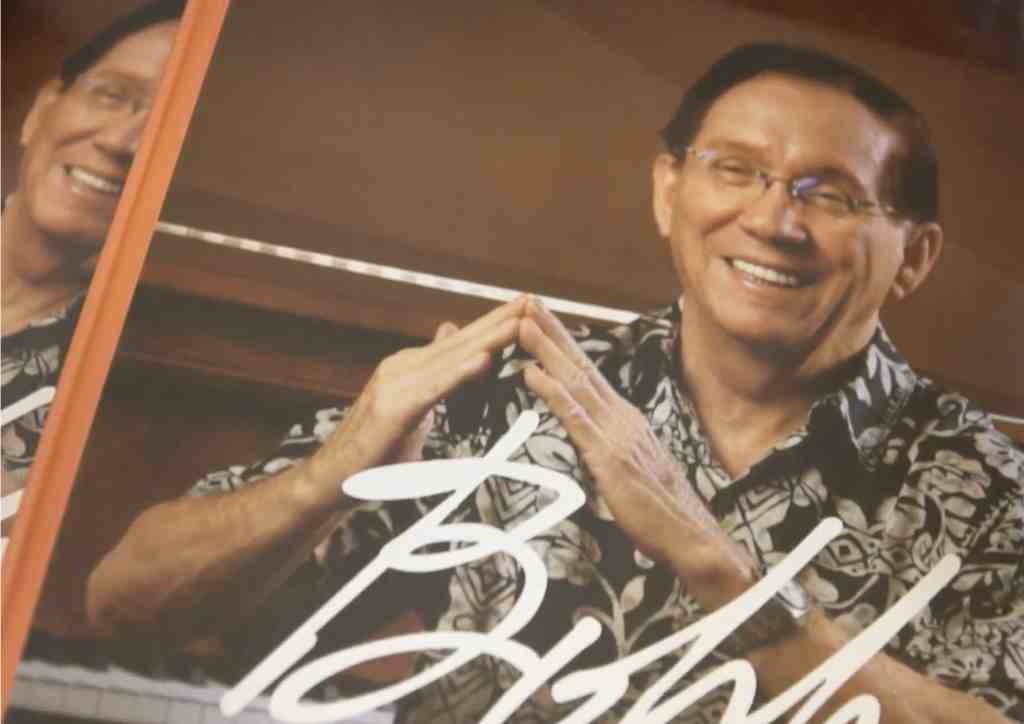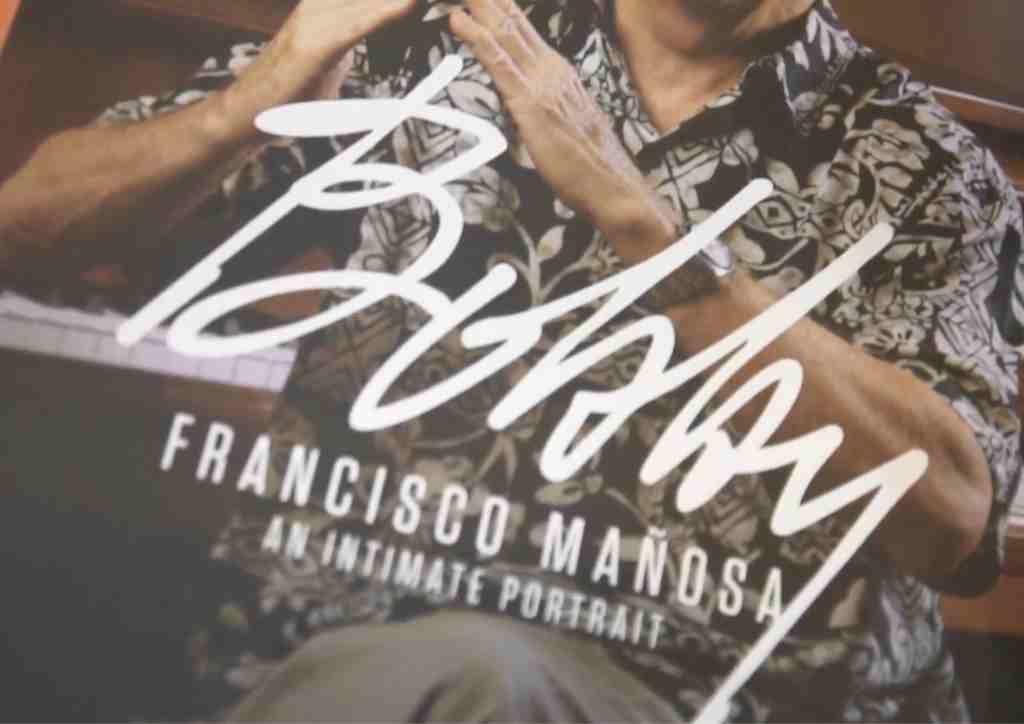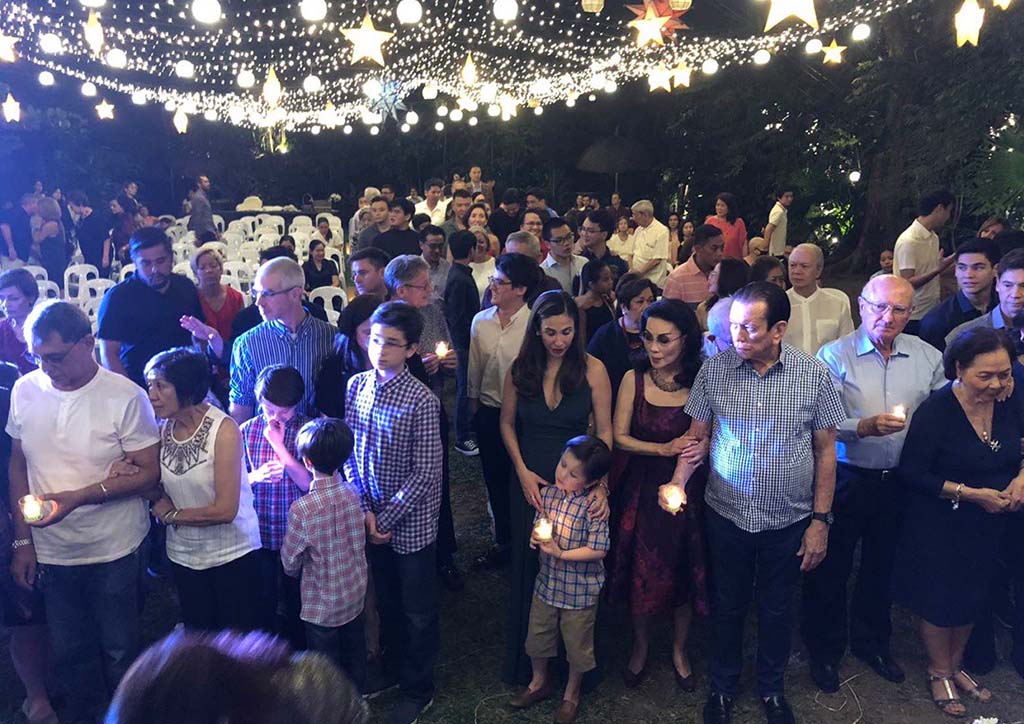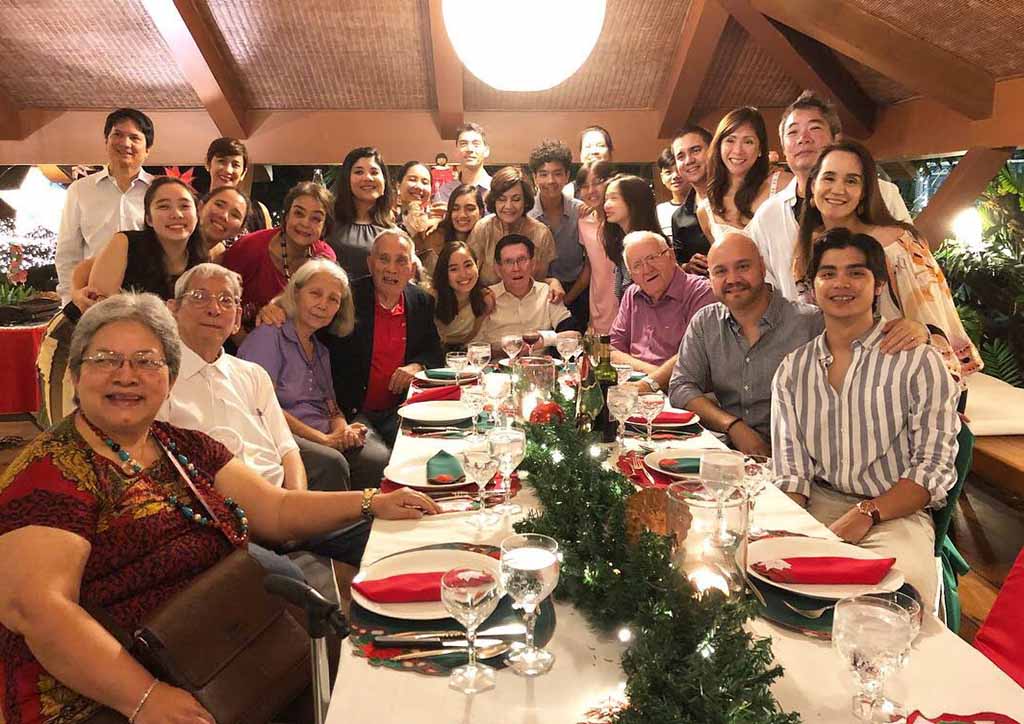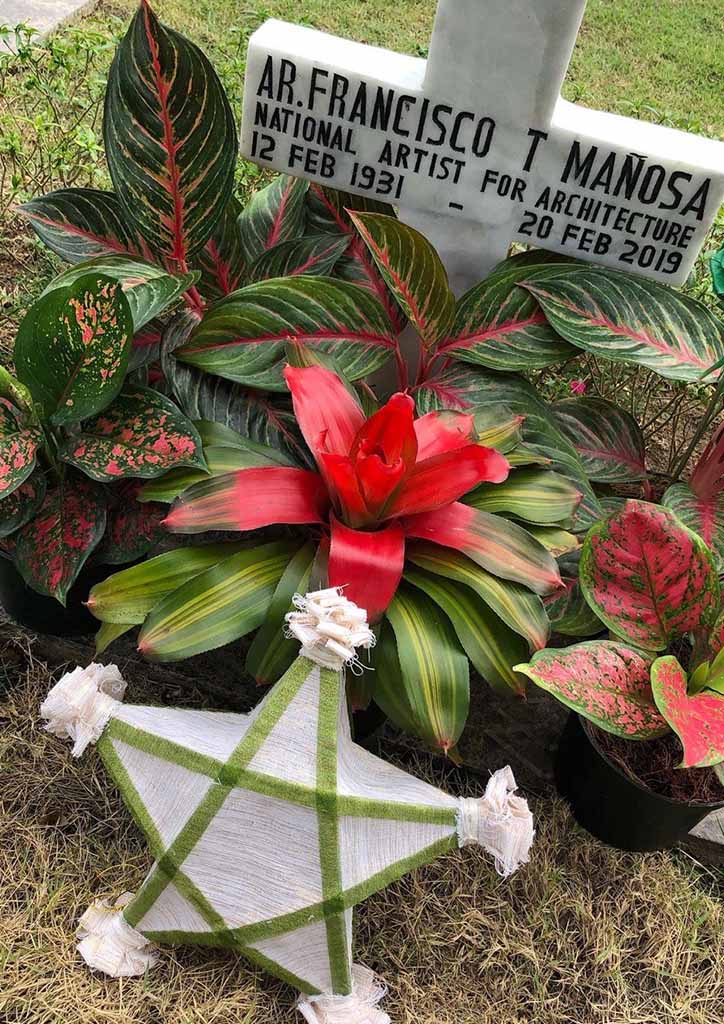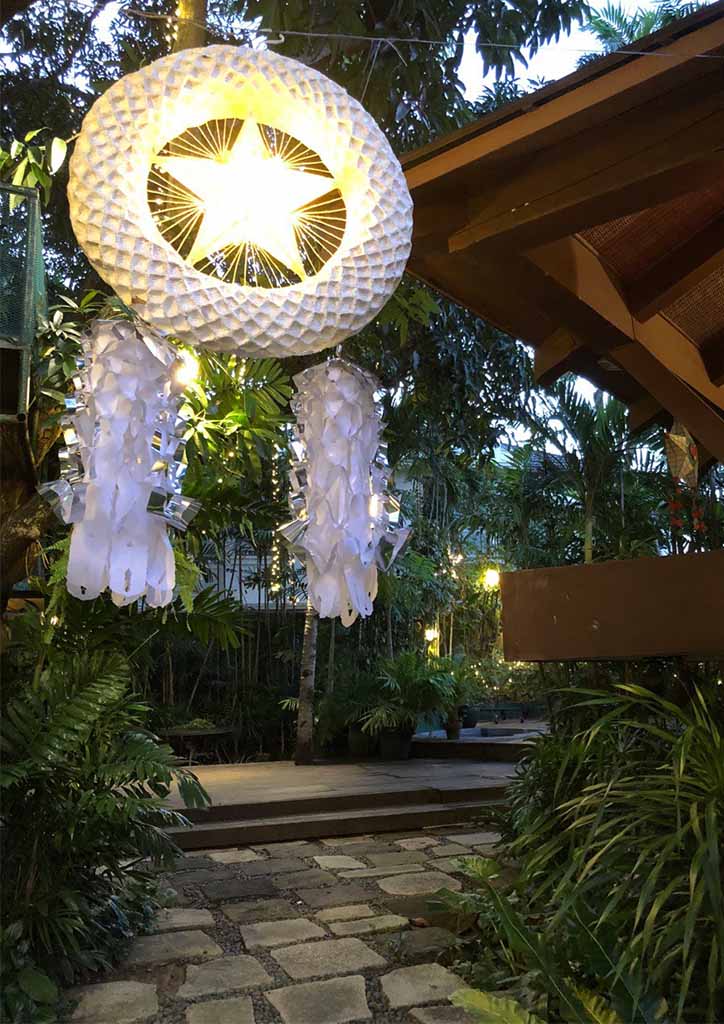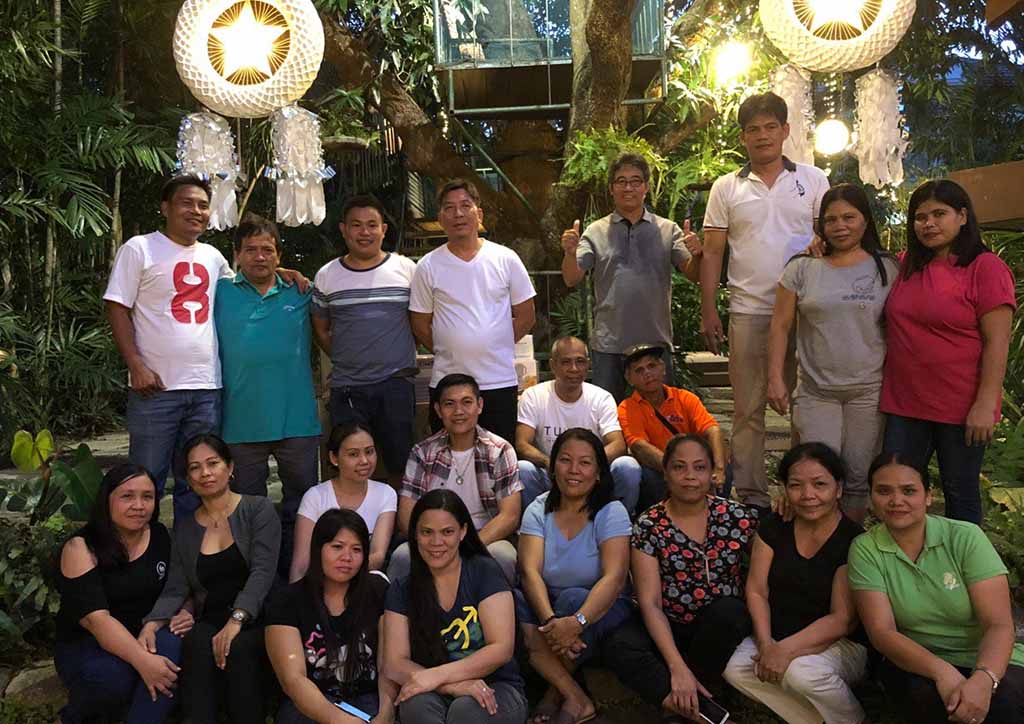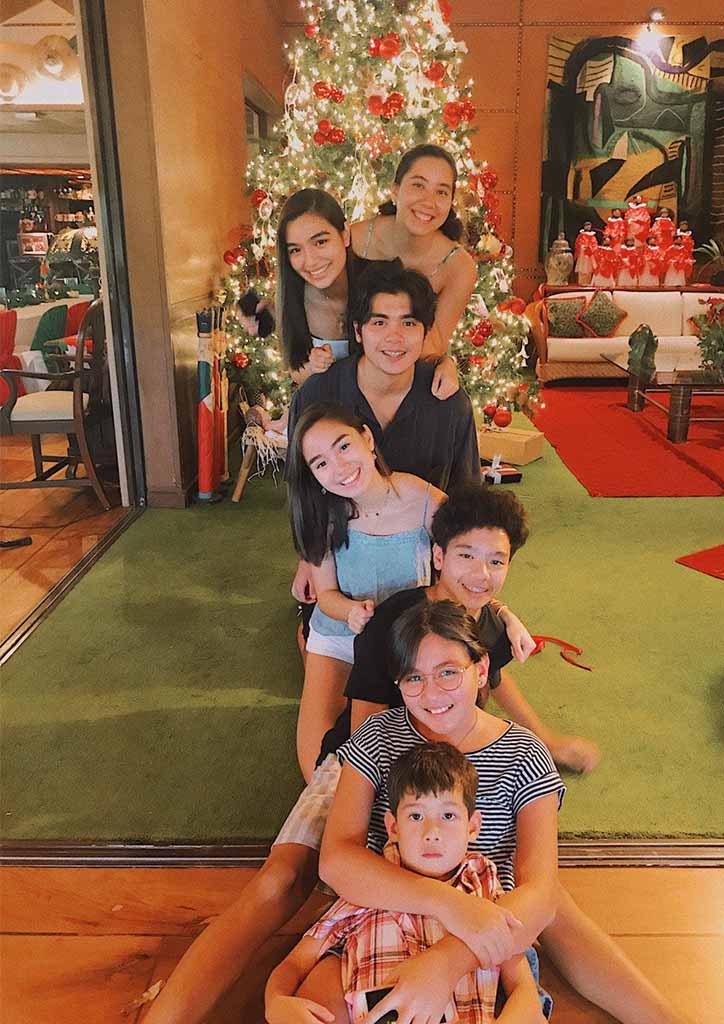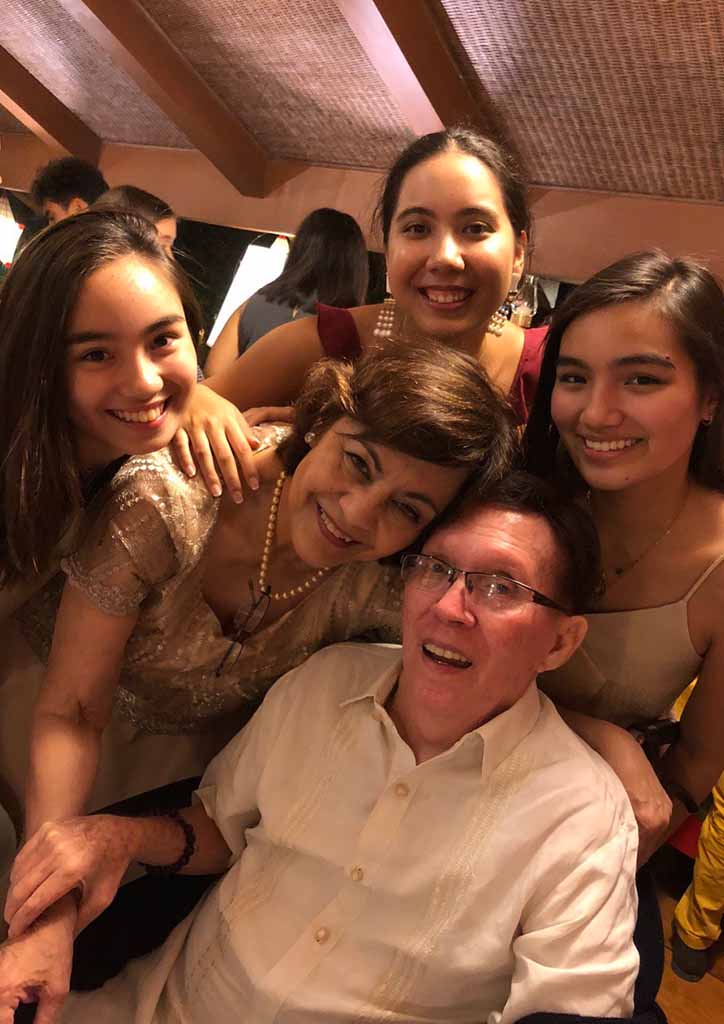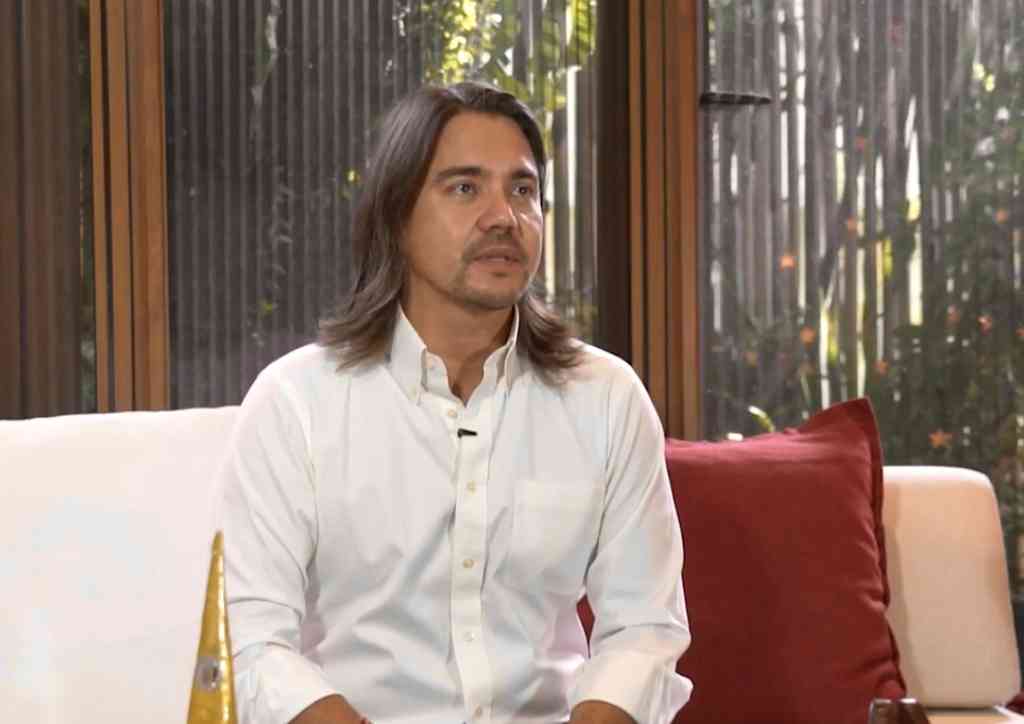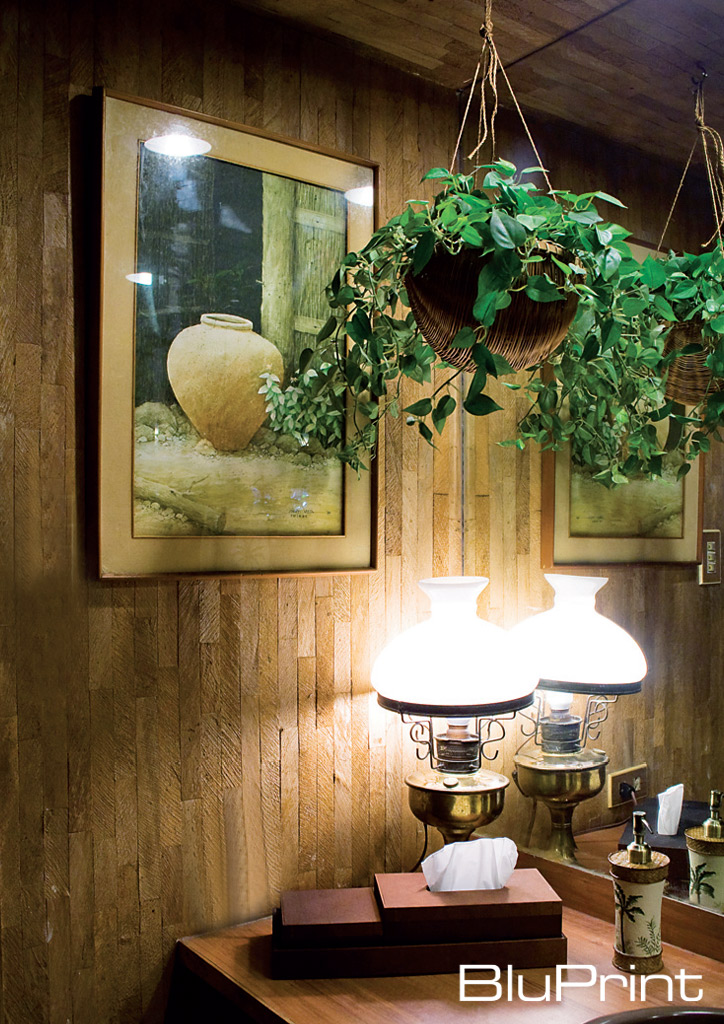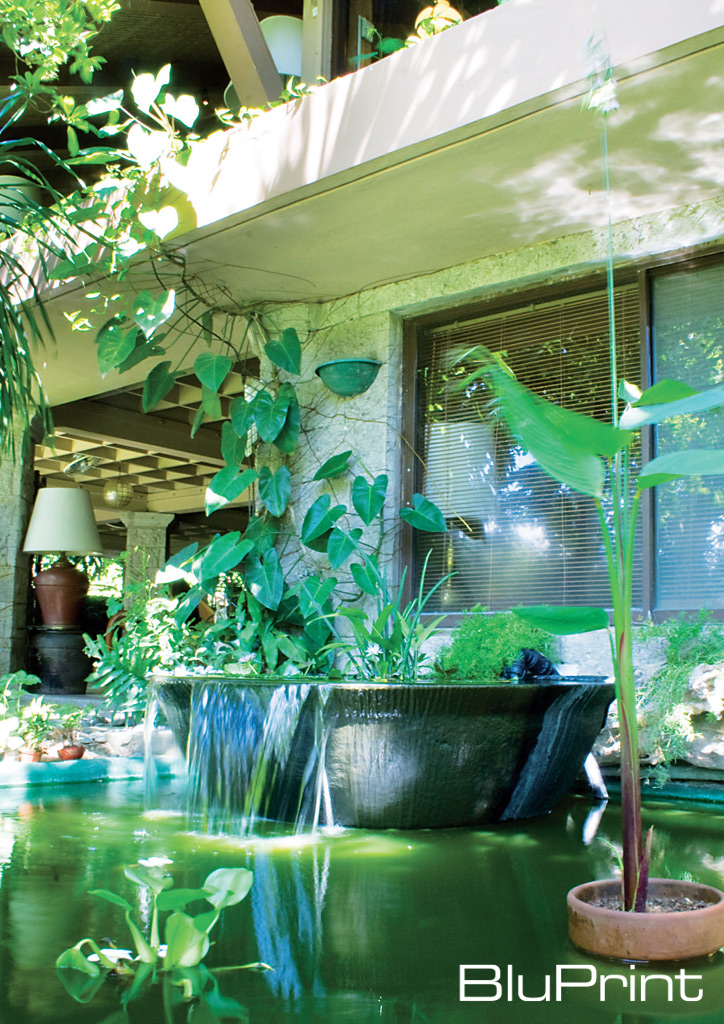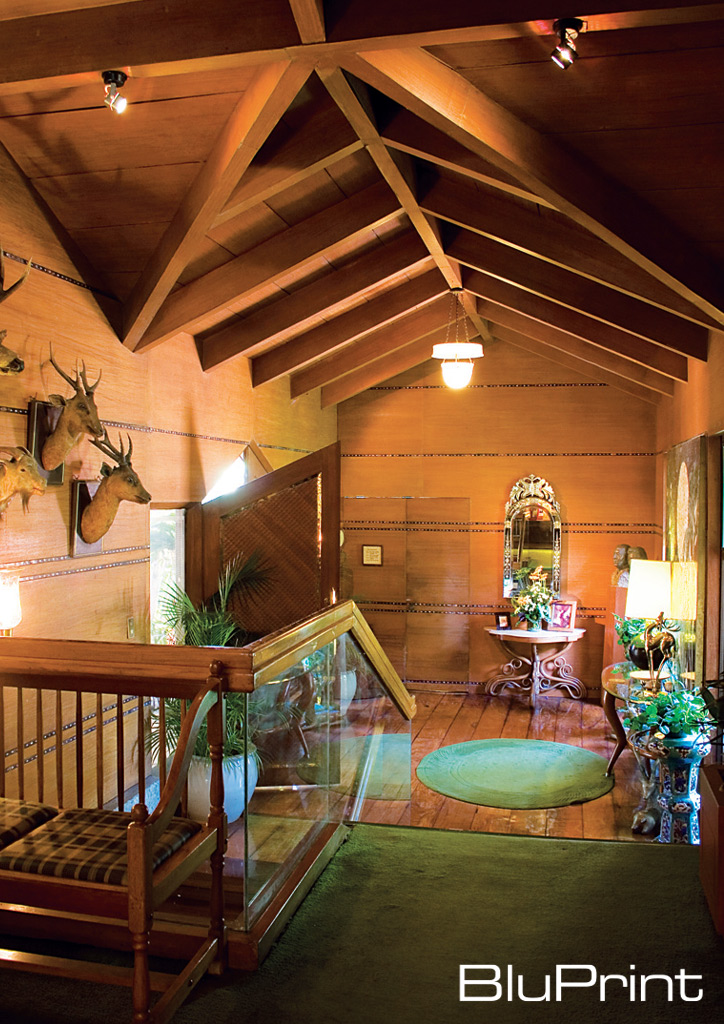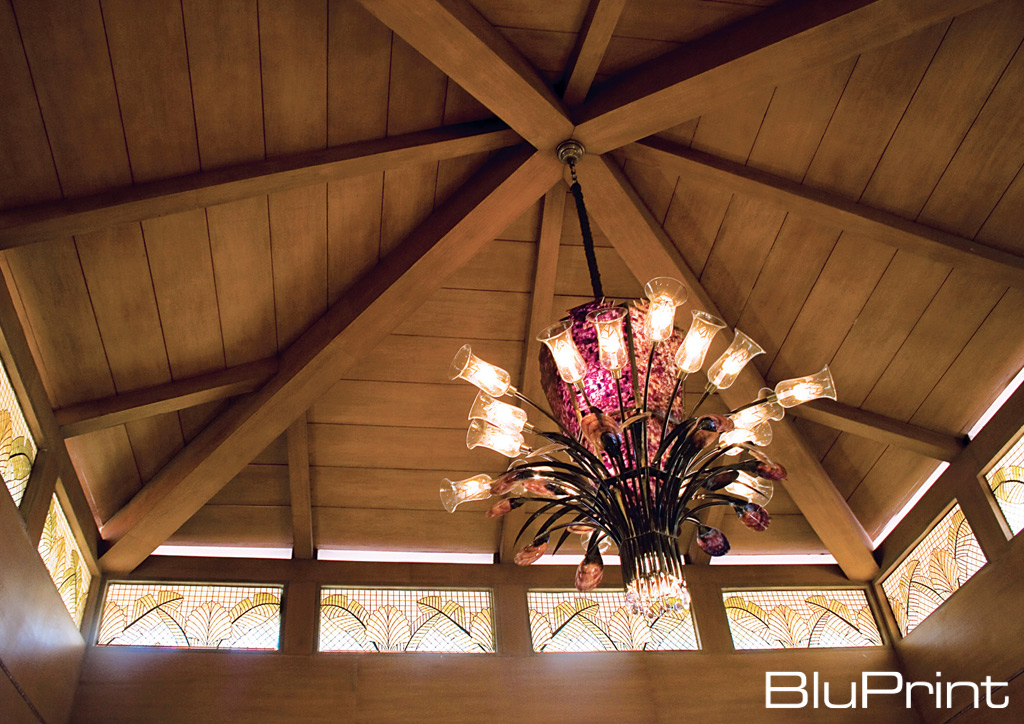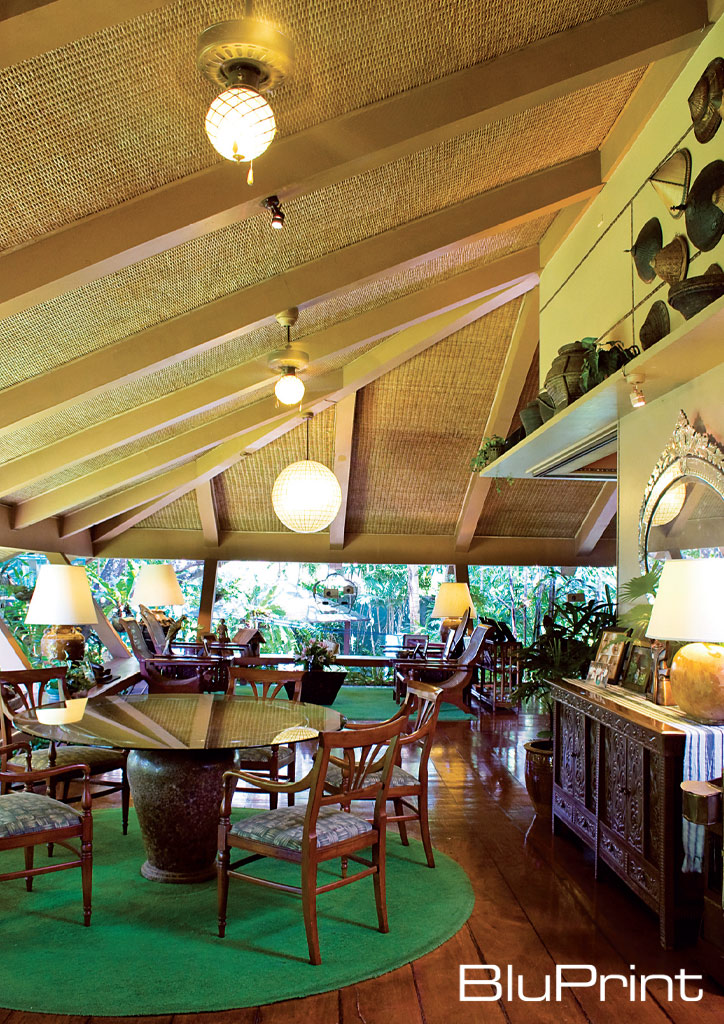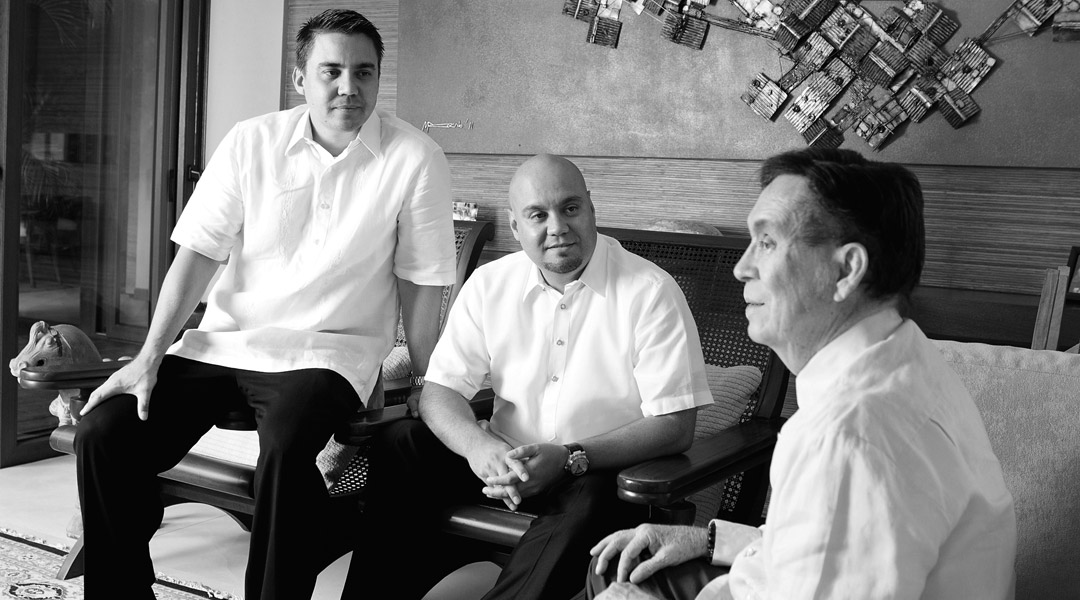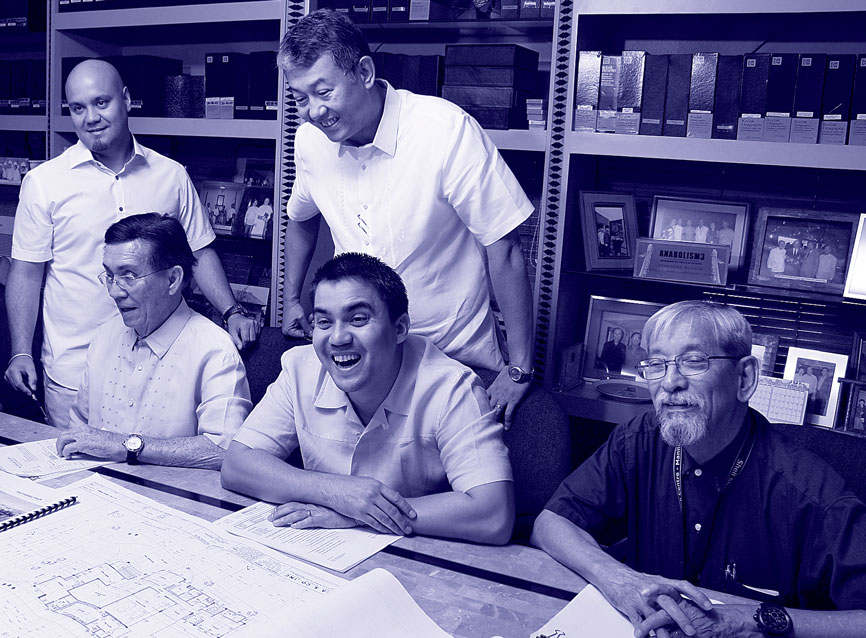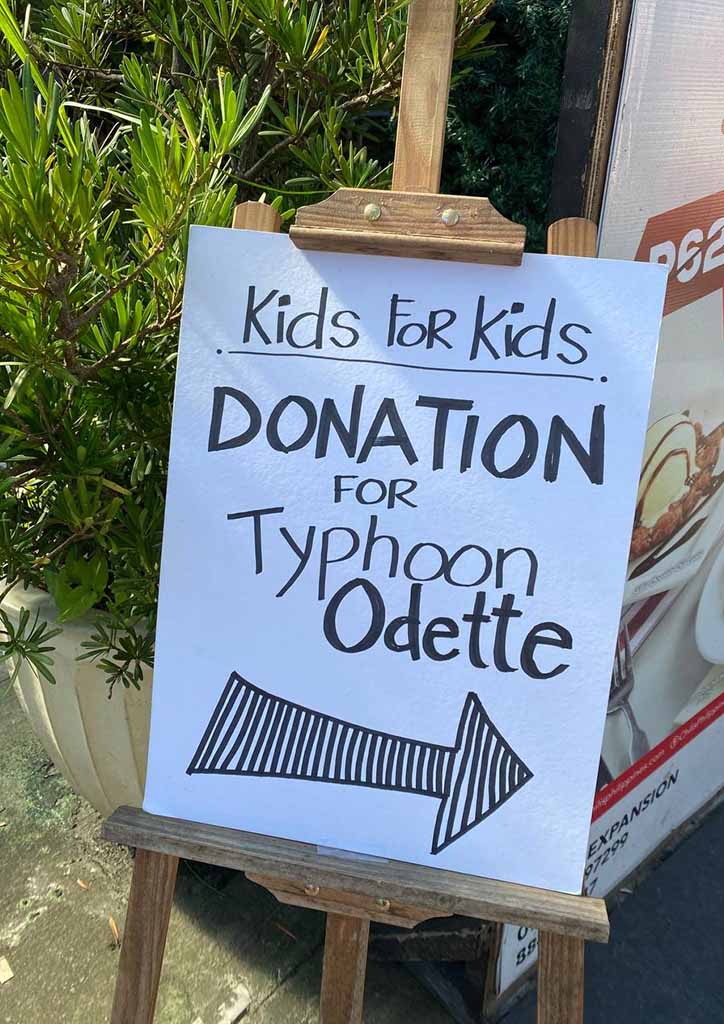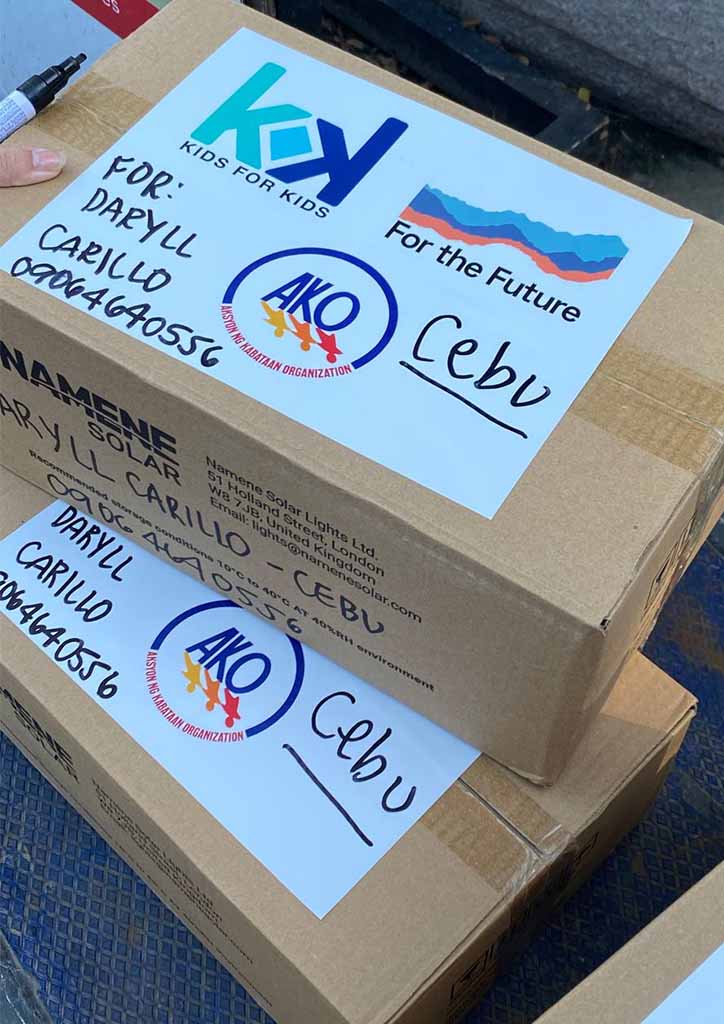
Christmas with the Mañosas: An Intimate Affair
For Filipinos, Christmas is the time for gatherings, gift-giving and the spreading of goodwill and joy. For the family of the late great Architect Francisco Mañosa, they have carried out their traditions all these years even during this pandemic. In this exclusive Bluprint interview, we are given a glimpse on those tight-knit loving family who revel in their quirky, creative environment, Christmas masses and the importance of giving back not just this holiday season, but throughout the whole year.
Denise Mañosa, daughter Bambi, son Gelo, granddaughters Sabina, Tasha and Bella and daughter-in-law Gem have graciously opened up their home to us, happily talking about the difference between disciplining the children and grandchildren, how the grandparents weren’t referred to as the traditional Lolo and Lola but Bob and Mitch, and continuing Bobby’s legacy and advocacy through the family’s TUKOD FOUNDATION.
Architect Mañosa’s biography, “Bobby: Francisco Mañosa, an Intimate Portrait,” is written by his daughter-in-law, Gem Deveras Mañosa. The book wonderfully captures the famous architect in the different aspects of his life—as a father, a boy, a lover, a musician, a visionary, an architect and most of all, a hero.
BP: How do you celebrate Christmas as a family?
Denise: It’s a big celebration. Originally when we were younger, we would always celebrate it in my parents’ in laws house. In the year 2000, we asked our friend, Father Mark, to hold a mass for our family. So every year, he would come on the 24th and we would have mass at 6 p.m. and have dinner in the house. Because of that, it grew and grew. The last one we had was just before the pandemic year 2019, and we had 300 people in attendance because it was an open house. In 2020, however, it was just our family.
Bambi: It was fun having everyone together. It was hectic, but there’s something wonderful about the “hectic-ness” of the holidays. The hassle of getting people together and the food all the fun fare but we enjoyed it, especially the mass and seeing people we hadn’t seen in a while. Some people would end up passing away in the course of the year and we wouldn’t see them anymore in the mass next year. So we sort of saw life in that mass, who was coming and who was no longer there. It was wonderful and we got everyone together, the neighbors, family friends, extended family, even the friends of the children.
Gelo: Like most families, we like gathering for dinners and get-togethers. Pretty much a month of celebration, celebrating with the Manosas and then the Singhs. Christmas day is quite hectic because we’d be with one family in the morning, then another family in the evening. It got more complicated when we all got married because now we have our in-laws in the mix but it’s a fun chaos, and that’s still the way we do things up until today.
Bella: Very casual and very simple. So usually how we spend Christmas is to see our extended family and have gatherings.
Tasha: We love Three Kings. We’ve celebrating it since we were children. It’s this tradition of hiding our shoes beside the Belen and then you wake up the next morning look for them in the morning, especially with Bob and Mitch. Our Titos and Titas are always making it interesting to find the gifts hidden and it’s just really a fun time of waking up super early and be excited to find your gifts all around the house.
BP: What is your fondest holiday memory with Architect Bobby?
Bambi: For me, it’s putting up the decor. My dad was so big on Christmas, he had one giant room dedicated to Christmas decors. There were still decors that we used that my parents made when they were newlyweds. They didn’t have money then to buy Christmas decors. I loved helping my dad decorate the house. I thought it was really fun and then watching him with the grandkids was really sweet.
Gelo: My father had this thing of rearranging furniture during Christmas time and you’re living in your house but it felt different and all the Christmas decorations would come up. Decorating the Christmas tree was our big thing. Year after year, he would end of buying new decors for our tree and I’d get a kick out of looking at different wooden toys that would go into the tree and be part of my childhood memories playing with them.
Sabina: When I was 5 or 6, I had begged my parents for a dog but they wouldn’t let me. On Christmas morning, my Lolo brought me this huge, well-wrapped box and I opened it and it’s a plastic ball. I was so disappointed but there was a note that said, SQUEEZE IT, so I did. Then this puppy runs out of the kitchen with a giant bow and I became so excited. So that was my favorite Christmas. Until now I still think about it.
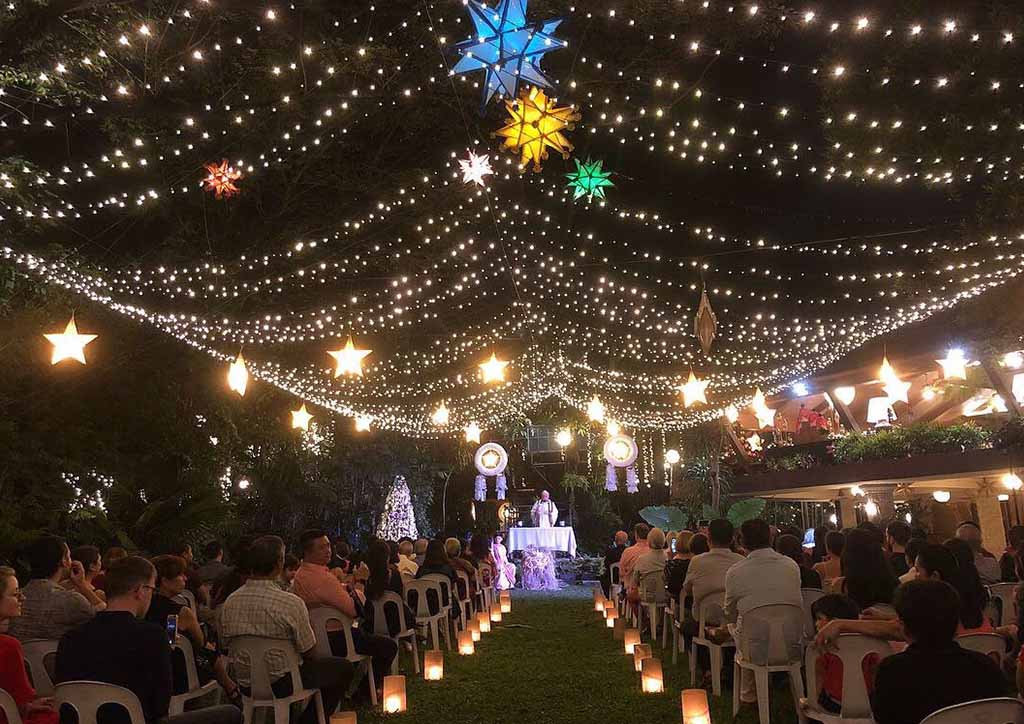
Gem: For me, it was always the Christmas masses. My kids were always required to participate. My boys were always Joseph in the Nativity scene. That was always my favorite part of Christmas. Sabina used to play Mama Mary, then she graduated to becoming a reader when she grew older. My mother-in-law made costumes so other families would come and their children would take part in the Nativity scene.
Tasha: Bob would always have food in the car to give away to kids outside or we would go with Mitch to different outreach work, including TUKOD FOUNDATION so Christmas in our family stretches throughout the year, not just December. That’s my biggest takeaway when it comes to Christmas with my family.
Bella: Every January, we would have our household Christmas party where everyone gets together and we have this entire day of play with them filled with games and obstacle courses. We treat everyone like family.
BP: Was there any areas in the house that you love to gather? A place you considered special?
Denise: It was really the veranda, as it was also our dining room. We didn’t have a formal dining room and it was an L-shaped veranda and we would constantly move the furniture. Even the living room, that’s why our furniture have become worn out. (Laughs)
Bella: It has to be the veranda, where we have the dining table. I really love how our dining table in Saranggani could be moved around so it really was a place we could gather. We’d have parties there, invite our friends over. It was just to open space where people could come and we would also meet several people because of it. This made everyone feel at home and part of the family, there’s this sense of camaraderie in that area.
Photos courtesy of Ed Simon
Tasha: The house in Saranggani had its own brand, even without the physical structure, as the same traditions and warmth have been carried over and remained alive here.
Bambi: Because my father loved to entertain. When people would come to visit we have to be ready, like 7am we have to wake up. Everything had to be in place all the time. It was like growing up in a museum. The space and the warmth, the house has always been welcoming. The space was always informal.
BP: What was the difference between children and grandchildren when it came to discipline to Architect Mañosa?
Bambi: There’s no discipline. (Laughs) My dad disciplining grandkids, never! But he just expected them to do the right thing. He would spoil them but not to the point of being brats. Just spoil them with so much love and so much attention, not really with material things sometimes they would just drive out to get ice cream. As a father, he wasn’t that strict. He wanted to discipline in terms of behavior. Actually, my mom was designated witch. (Laughs)
Denise: When Bambi was born, Bobby said, “All right, you’ll be the witch and I’ll be Prince Charming,” and that was it.
Gelo: What discipline? There’s absolutely no discipline when it comes to the grandchildren. With us, he’s not strict. The disciplinarian was my mother. My father was more of Peter Pan. He was the guy who would bring in a toy and he would come up with a different way on how to play with it. With regards to disciplining, not at all, especially with the grandkids. For my siblings and I growing up, we had to keep things in order because we had people touring the house all the time.
Bambi: Dad never allowed us to borrow toys, same way he didn’t want us to lend our toys because it wasn’t appropriate. In Saranggani, I was already a teenager. We were not allowed to have stickers or posters in our rooms. If we had a sleep over and people would be invited to take a tour of our house, even our friends had to wake up early and be ready to welcome the guests.
Denise: Bobby’s philosophy was the bedroom is a place to sleep and to study. My children were not supposed to play or eat there. No television. Everything was in its proper place. But with the grandkids, everything was allowed, toys, TV, food inside, etc. (Laughs)
Tasha: No, Bob wasn’t strict. If he wanted us to do something, we had to do it, even if it is crazy.
Bella: When we were kids, there was a typhoon and we were in this bouncy castle. Bob was like, “Go, because I want to take pictures.” So we did in all our clothes. He really liked pictures.

Tasha: We’d always drive around the village to see the decors during Christmas time. We would take pictures by houses with nice decors and we’d pose. You weren’t allowed to be shy.
BP: For Denise, how was Architect Mañosa as a romantic? In the early years, how did you know he was the one?
Denise: He was always a hugger. He would hug everybody, so he was very romantic in that sense, very, very cariñoso. We would always sleep hugging. We would be each other’s pillow. Sometimes we did go to bed angry, but since he would always hug me, I could not stay angry too long.
How did I know he was the one? I really did not. I was on vacation and he was also on vacation and we met in Madrid of all places. Then I came back to San Francisco where I was still studying, he also came months after his tour. San Francisco’s cold that we would always hug each other. Also, he was much older. What attracted me to him was that he was funny. He was always making me laugh. I’m not naturally not a humorous person.
We would be writing to each other when he had to go home to Manila. Phone calls were so expensive then no cellphones or internet. After my graduation, I was supposed to go to Europe for 1 year. The night of my graduation, he called me and proposed. Without thinking, I just said, “Yes.”
I was in shock after we hung up. The next day, I let my parents know and that was it. All my plans changed so I went back to Manila. My mom was trying to dissuade me to marry him. I don’t know why I was so adamant. On my wedding day, my dad said if you change your mind, I’ll always be here for you. (Laughs)
Thankfully, my family liked him. He was a very charming person, he charmed everybody.
BP: As a visionary, is there a project that Architect Mañosa wanted to see to fruition? What was the project he was proudest of?
Denise: That’s a really good question. But Bobby would always say, “The next project.”
Bambi: When he’s asked what was his favorite project, he would always say, “The next one.” Because every project that came his way excited him as it was never like the previous one so it’s always something different, whether it be a church or a resort it’s not always the same creative collaboration.
Denise: He had a dream, though age took over. Bobby wanted to put up a school of architecture. It’s like a school that Frank Lloyd Wright put up in the States, but Bobby’s school would be about architecture. They would hold a lot of lectures and to see the world in a different lens.
People would say there’s no Filipino architecture but to Bobby, he would say: “Isn’t it time that we start it?” Whenever he was invited by schools for a talk, he would just go, he wouldn’t even accept payment speaking fee, even if it was taking up a lot of his time. Bobby would only say, “No, I have to teach them. I have to teach my barangay. I have to teach the young and continue the Filipino architecture.”
He wanted to teach his children to be observant. He would ask “Why? Why do you like it?” Do not imitate, emulate. If you like something, find out what made it appeal from there, you create your own.
Bambi: Yes, Dad wanted to teach the young. He wanted to create a school of thought.
BP: Can you tell us more about TUKOD and its advocacies?
Sabina: My grandmother really instilled this in us, that any grandchild who’s over the age of 21 has to be a board member and start helping with the foundation. TUKOD was started by my dad (Dino) and my grandfather.

Gem: It was to publish the first architecture book. That’s how it began and evolved into a charitable foundation now.
Sabina: We’re mainly focused on our feeding program for teens. We want to make sure that they’re well-fed all throughout the school year, so that they’re able to focus more on their studies and they’re able to complete their requirements till the end.
Another one we’re starting next year is our literacy program that’s going to provide private tutoring to the students who need assistance in that regard. So that’s something we are plotting out, to give these students access to extra help and tutoring for school.
BP: What is the family’s vision for this book?
Denise: We actually started this book when he was still alive. He was known as an architect and sometimes a musician. We wanted to have his biography to show how he was a person. He had hired a writer before but the book was coming out too much like an architectural book. We already had architectural books on his work. It took some time. Then we suggested if Gem could do it. I’m so glad my daughter-in-law agreed, because she’s an English teacher and she did a great job.
We wanted our grandchildren to know who their Lolo was, aside from being a National artist and he was someone who touched a lot of lives. The people of know him, they were thinking that this is Bobby. For those who didn’t know him would think, I wish I could have known him. He’s such a multifaceted person.
Bambi: Like my mom said, my dad goes beyond architecture. We wanted to show that my dad was not just about architecture but there something wonderfully human about him and so warm that he drew a lot of people to him.
I was so happy that Gem wrote it because you are seeing it from the point of view of a family member and at the same time, someone who wasn’t his daughter at birth. Gem was able to interview a lot of friends and family and you will see how everything ties up together in the book.
Gem: I got involved with this book through my mother-in-law. They had hired another writer before but for them, it didn’t seem personal enough. So I came in to give it a more personalized aspect. If you look at the different chapters of the books, we wanted to show he was very well-rounded, quite a renaissance man. He did so many innovative things. He always kept the importance of family, how it featured in his life. This great man was more than just an architect. He was many many other things.
BP: If Architect Mañosa is still alive, how would he celebrate this season?
Gelo: We would most likely be celebrating it the same way we had always done. A bit more selective, though with immediate family. My dad didn’t like to be cooped up so I imagine we would be driving around, maybe go to the beach.
Watch the full exclusive interview by clicking the link
——————————————————————-
Tukod Foundation Inc. wishes to stay true to its name and live by the philosophy of its founder, National Artist for Architecture and Allied Arts, the late Francisco “Bobby” Mañosa, whose unrelenting passion to design Filipino became the very tukod in establishing the country’s identity through architecture. Its mission “to empower and develop the youth by creating spaces and events that immerse them in the beauty and diversity of Philippine culture”, is carried out by four core programs: Creating Spaces, Education, Events and Adopt-A-School.
To raise funds for these programs, Tukod Foundation is offering two (2) special Christmas Boxes for Php 5,000. Their Red Box supports Nutritional Feeding Program, while their Green Box supports upcoming Literacy Program. Each box will contain a card indicating the program you are donating to and a new book.
Every donor will receive a limited edition copy of “Bobby: Francisco Mañosa, An Intimate Portrait,” a biography written by Gem Deveras Mañosa and signed by Arch. Mañosa’s family.
The family is also extending help to the victims of Typhoon Odette and now accepting donations through Kids for Kids youth organization founded by Natasha and Bella Manosa who are working with their teams in Manila, Leyte, Cebu , Bohol and Siargao. The team is now collecting goods and funds to allocate for the affected communities to be distributed by their on ground teams. Visit their IG Account @kidsforkidsph to donate.
Photos courtesy of Bambi and Sabina Manosa
